If you’re like most people, you’ve fantasized about what it would be like to be super rich. Maybe you have even pondered how to finagle your way into marrying the richest man in the world (Mexican business magnate Carlos Slim, net worth: $69 billion) or the world’s richest woman (Australian mining tycoon Gina Rinehart, estimated net worth: $29 billion). Nevertheless, not the assets of Slim and Rinehart combined, nor even the peak wealth of other modern mega-billionaires like Warren Buffet and Bill Gates, can compare to the riches of the top 10 richest people of all -time, compiled here in this list. Keep in mind that the estimated peak wealth amounts listed here are inflation-adjusted for today’s (U.S.) dollars. Oh, and there’s no hope of marrying or winning a lucrative lawsuit against any of these powerful men – they’re all dead.
10. Alan Rufus
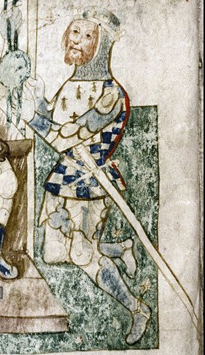
Estimated Peak Wealth: $149 to $178 billion
Lived: 1040 to 1093
About: Also known as “Alan the Red,” Rufus was the son of two British counts and second cousin of the first Norman King of England, William the Conqueror. Rufus is thought to have been instrumental in helping his Norman cousin William “the Bastard” Conqueror invade England during the Norman Conquest in 1066. Apparently, helping pull off the invasion of a country can really pay off – Rufus received 250,000 acres of land in return for his loyalty and participation in the conquest. Rufus’ nearly 400-square-mile estate stretched throughout London, Yorkshire, Norfolk, Suffolk, Cambridgeshire, and Northhamptonshire. With an income of £1,100 per year and an estimated net wealth of £81.33 billion upon his death in 1093, Alan Rufus is the richest Briton in English history.
9. Cornelius Vanderbilt
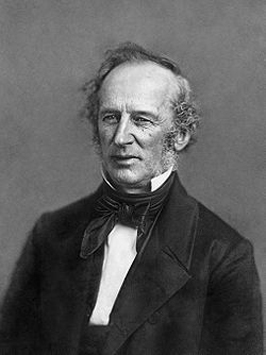
Estimated Peak Wealth: $170 to $185 billion
Lived: 1794 to 1877
About: One of the richest Americans to ever live, native New Yorker Cornelius Vanderbilt was an industrialist and philanthropist, making most of his money in his 70s when he began to build a railroad empire. After working as a successful steamboat entrepreneur for most of his life, Vanderbilt began to buy out railroad lines in the 1860s. Vanderbilt consolidated some of his major lines into the New York Central and Hudson River Railroad in 1870, forming one of the first American mega-corporations. The character Nat Taggart in Ayn Rand’s 1957 novel Atlas Shrugged is thought to be based on Vanderbilt. Socialite and heiress Gloria Vanderbilt is Cornelius Vanderbilt’s great-great granddaughter, and journalist and TV personality Anderson Cooper is his great-great-great grandson.
8. Henry Ford
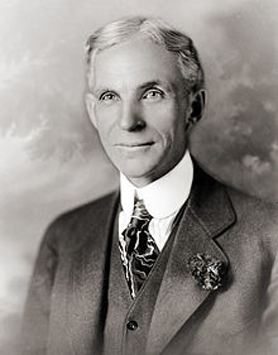
Estimated Peak Wealth: $188 to $199 billion
Lived: 1863 to 1947
About: The developer of the assembly line and the first mass-produced automobile, Henry Ford is today a household name that is synonymous with American transportation. While Ford, founder of the Ford Motor Company, did not invent the automobile, he created the first car that was affordable for middle-class Americans, the “Model T.” His mass-production style of assembly also revolutionized American industry. Talented industrialist though he was, there was a dark side to Henry Ford: cited as “an inspiration” by Adolph Hitler, Ford was a publisher of anti-Semitic texts, including the book The International Jew, the World’s Foremost Problem. Ford recanted his views in 1927 after customers began boycotting Ford cars as result of Ford’s anti-Semitic publications. Ford left most of his wealth to the Ford Foundation, and his family continues to control the company.
7. Muammar Gaddafi
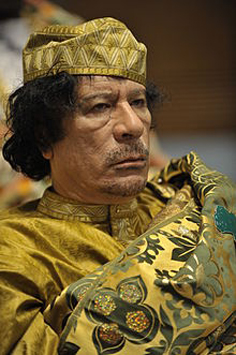
Estimated Peak Wealth: $200 billion
Lived: 1942 to 2011
About: Gaddafi was the ruler of Libya whose dictatorial regime began in 1969 and ended with his capture and death in 2011. Despite starting life as the son of rural, illiterate nomads, Gaddafi managed to become one of the richest dictators of all-time. Known for his flamboyant outfits, bizarre public addresses, and myriad human rights abuses, Gaddafi is thought to have amassed his ill-begotten wealth through the exploitation Libya’s rich natural resources, namely oil. Gaddafi is believed to have hidden or invested money in every major country in the world, keeping his money with family members, in bank accounts, and in real estate and investments. Gaddafi owned stake in London’s Financial Times, Italian soccer club Juventus, and car company Fiat. He had luxury homes all over the world, including sprawling estates in London, Spain, and Englewood, New Jersey.
6. William the Conqueror
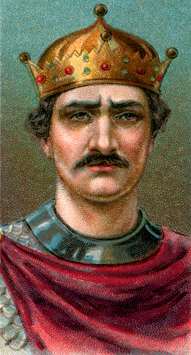
Estimated Peak Wealth: $210 to $230 billion
Lived: 1028 to 1087
About: You didn’t think our Norman friend William the Conqueror, a.k.a. William I, a.k.a. William the Bastard, gave all of the spoils of war from invading England in 1066 to his cousin Alan Rufus, did you? Of course not! After conquering Britain, William (who, in case you were wondering, got his“Bastard” nickname from being the illegitimate son of the Duke of Normandy) set about to confiscate the estates of English nobles and their heirs. By the end of his reign, a small group of the King’s inner circle had acquired about half of England’s landed wealth. A shrewd conqueror if there ever was one, William also enacted various campaigns to maximize tax revenues from his subjects. Upon his death in 1087, he left his sons the equivalent of $210 to $230 billion (depending on the estimate) in assets, which included the whole of Normandy.
5. Mir Osman Ali Khan
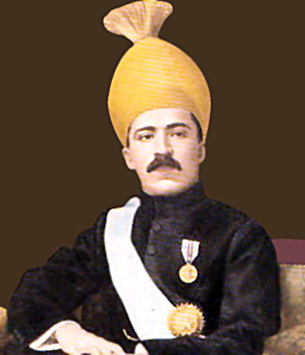
Estimated Peak Wealth: $225 to $230 billion
Lived: 1886 to 1957
About: Osman Ali Khan, Asaf Jah VII was the last Nizam, or leader, of the South Asian state of Hyderabad. He ruled from 1911 until 1948, when Hyderabad became part of India. In 1937, Osman Ali was named by TIME Magazine as the richest man in the world, and is believed to have remained the richest individual in South Asia until he died in 1967. His vast coffers were said to contain $500 million worth of gold, silver, and jewels. This collection included a rare Jacob diamond, valued at approximately $95 million in 2008, which was used by the Nizam as a paperweight. The Nizam is also said to have owned a total of 50 Rolls-Royces. Osman Ali obtained most of his wealth through mining royalties – in the 19th century, Hyderabad was the only supplier of diamonds to the global market. Fun fact: Osman Ali sired at least 40 children, by seven wives and 42 concubines.
4. Nikolai Alexandrovich Romanov
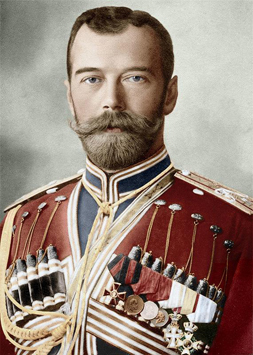
Estimated Peak Wealth: $290 to $300 billion
Lived: 1868 to 1918
About: Nikolai Alexandrovich Romanov, a.k.a. Tsar Nicholas II, was the last Emperor of Russia, as well as the titular King of Poland and Grand Duke of Finland. Nicholas ruled the Russian empire from 1894 to 1917, a reign which saw the empire go from one of the world’s major powers to the brink of total collapse. Following the February Revolution of 1917, Tsar Nicholas II and his family were abducted by Bolshevik revolutionists and were eventually murdered by firing squad. The monarch’s peak net worth was equal to a staggering $290 to $300 billion in today’s dollars. Canonized by the Russian Orthodox Church, Tsar Nicholas II was the richest saint in history.
3. Andrew Carnegie
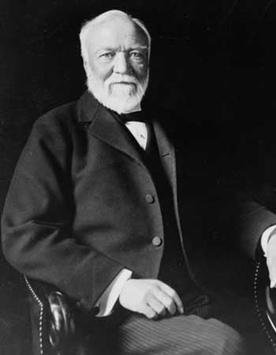
Estimated Peak Wealth: $309 to $310 billion
Lived: 1835 to 1919
About: Carnegie, a Scottish-American industrialist, is responsible for leading the incredible proliferation of the steel industry in the United States in the late 19th century. Carnegie is also well-known for his philanthropy, giving most of his money to libraries, schools, and universities. Carnegie’s is a “rags to riches” story: after emigrating from Scotland to the U.S. in 1848, Carnegie’s first job was as a factory worker. He was promoted to bill logger, then to messenger boy, and later rose through the ranks at a telegraph company. Eventually, Andrew Carnegie built his own exceedingly successful steel company. Carnegie acquired the majority of his wealth after selling his Carnegie Steel Company to J.P. Morgan for an astounding $480 million in 1901. From this company, Morgan created U.S. Steel, which is still one of the major steel companies in existence today. Carnegie’s name also continues to live on, with many universities, libraries, foundations, and landmarks bearing his name, including the world-famous Carnegie Hall concert venue in New York City.
2. John D. Rockefeller
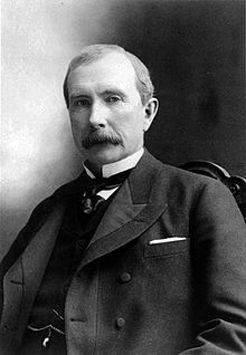
Lived: 1839 to 1937
Estimated Peak Wealth: $336 to $340 billion
About: Like Cornelius Vanderbilt and Andrew Carnegie, John D. Rockefeller, the man for whom Manhattan’s famous Rockefeller Center was named, was another legendary American industrialist and philanthropist. Rockefeller’s main business was oil; his Standard Oil Company, formed in 1870, dominated the petroleum industry at a time when gasoline and kerosene began to soar in importance. As a result, Rockefeller became the world’s richest man. Rockefeller also became the first American billionaire – in 1916 dollars! While often criticized for his monopolistic business methods, with his vast wealth, Rockefeller was able to create charitable foundations which had major impacts in the fields of education, scientific research, and medicine. Notably, medical research funded by Rockefeller’s foundations helped to eradicate diseases such as yellow fever and hookworm.
1. Mansa Musa
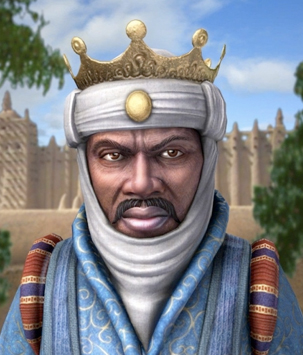
Estimated Peak Wealth: $400 billion
Lived: 1280 to 1337
About: Although there is a good chance that you have never heard of him, Mansa Musa, also sometimes referred to as Musa I of Mali, was an African king who by some modern estimates, was the richest human being in history. Musa was the Emperor of the Malian Empire, which, at the time, spanned approximately 500,000 square miles in western Africa. Historians say Musa’s wealth came from his empire’s production of more than half the world’s gold and salt. A devout Muslim, when making his Hajj, or pilgrimage to Mecca, in 1324, Musa’s procession is said to have included 72,000 men, including 12,000 slaves, and 80 camels, carrying thousands of pounds of gold dust. While Musa was responsible for significant military, economic, and intellectual expansion, which established Mali as a global power and intellectual capital on the world scene, he is most known for his extravagant gold expenditures during his Hajj, which were so high that they caused economic inflation in the Mediterranean, and particularly Egypt, for many years to come.
Honorable Mentions:
Bill Gates – Mr. Gates barely missed making the top 10, with a peak, inflation-adjusted net wealth of roughly $136 billion. In 1998, Gates amassed the largest nominal sum, ever, of $101 billion. Gates’ net wealth in 2011 was estimated at $56 billion, and he donates the majority of his money to charity.
The Rothschild family – If there were an award for “Richest Family of All-Time,” it would definitely go to the Rothschilds. The European banking dynasty’s combined peak wealth during the mid-19th century is estimated to have been anywhere from $350 billion to $1 trillion in today’s dollars.
King Solomon – According to the Bible, King Solomon was the richest man who ever lived, receiving 25 tons of gold per year, in addition to income from trade business and tributes. However, evidence of Solomon’s wealth outside of the Biblical accounts is lacking.
